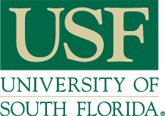Below is a summary of the abstract you submitted. Presenting author(s) is shown in bold.
If any changes need to be made, you can modify the abstract or change the authors.
You can also download a .docx version of this abstract.
If there are any problems, please email Dan at dar78@pitt.edu and he'll take care of them!
This abstract was last modified on March 16, 2021 at 9:03 p.m..

Bacteriophages are the most abundant organism on Earth and are biologically relevant since they have been used as agents to fight infections to antibiotic-resistant bacterial strains listed as being one of the top emerging health problems. The goal of this project was to annotate the novel phage EdmundFerry. EdmundFerry was isolated from wet soil found under foliage waste after rain at about 28oC. It was isolated on a Gordonia terrae 3612 host using the direct approach. EdmundFerry is in the DE cluster and one of only 5 member of the subcluster DE3. Cluster DE phages infect hosts in the Gordonia genus and typically follow a lytic life cycle, as seen in this phage. EdmundFerry has a capsid size of about 60nm and a tail length of 280nm making the classification as siphoviridae. The EdmundFerry genome is 55,873 base pairs long and has a GC content of 67.6%; it consists of 85 forward genes, many of which are in pre-established pham groups that was useful in determining the function of certain structural genes that had very poor HHpred hits, such as the major capsid protein. Overall, the annotation of EdmundFerry resulted in 34 genes with functional calls and another 5 that were classified as membrane proteins or 46% of the genes. Similar to many other actinobacteriophages, the majority of EdmundFerry's highly conserved structural genes were identified near the 5' end of the genome upstream of the tape measure. Most notably, EdmundFerry has a split lysin A with an N-acetylmuramoyl-L-alanine amidase domain (gp36) and a second lysin with a glycosal hydrolase domain (gp37). The second lysin-A was 545 AA, making it relatively large compared to the other genes in its pham. Other interesting genes include: MazG-like nucleotide pyrophosphohydrolase, polynucleotide kinase, RuvC-like resolvase, Cas4 family exonuclease, and a tail needle protein. Further analysis of genes in phages like EdmundFerry will contribute to the understanding of evolution and provide important data for health applications. Actinobacteriophages target bacteria such as M. tuberculosis that still infects >10 million people and killed >1.5 million people annually.
